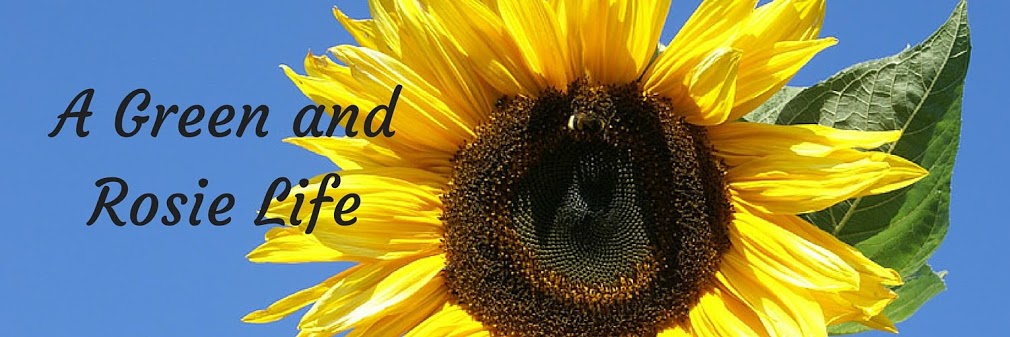Last week I found my polytunnel full of about 300 bees and had no idea why they were there. It was a mystery but now I do have a little more information.
I posted questions about the bees on Twitter and a Downsizer, a forum I am on. Several bee keepers came back to me and 2 thought that the bees may well have been attracted to the warmth which makes sense as we were having lovely sunny weather at the time with daytime temperatures in the tunnel in the mid twenties. They also thought they might be coming in to feed on the honeydew produced by aphids - but there are no aphids in there. A third thought was they were coming to drink the condensation on the plastic but again this did not seem likely as none were drinking, just bashing into the plastic. In fact the only thing I saw a few of them do (other than fly into the plastic) was to feed on the French Marigolds I have on there.
I then received some ideas about the species and I now believe the bees to be Ivy Bees. This species was only identified as a separate species - Colletes hederae in 1993 and has been in the UK since 2001 (longer in France). It is a mining bee that lives in the soil as a solitary bee but there may often be many hundreds or thousands of them in the same place. They are on the wing between September and mid November when their main food source IVY is in flower, hence their name.
 |
| Male Ivy Bee By Charlesjsharp (Own work, from Sharp Photography, sharpphotography) [CC BY-SA 4.0], via Wikimedia Commons |
The adults do not survive the winter so I assume they have larvae buried in the burrows that will emerge the following autumn. I am still unsure why they all arrived in my polytunnel but the weird thing is that as quickly as they appeared, they then disappeared. I went up on Saturday and there was just one bee left in there. There were no dead ones on the floor, nothing. The weather has cooled down so that might have been the trigger. Have they gone somewhere else to die and where their burrows are to be found are 2 questions I have not been able to answer.
There is more information on this blog post from Urban Pollinators and I know BWARS (the national society dedicated to studying and recording bees, wasps & ants in the UK) is monitoring their UK spread and would like to hear from anyone seeing the bees. Unfortunately at the time of writing this their website is down but hopefully it will be working soon and I'll add a link.
On the BWARS page I do remember reading that the bees rarely sting and in fact I believe the males have no stings at all - so even if you see a large number of them you are unlikely to be stung. They also are another very good reason for gardeners to not remove ivy and in fact to actively encourage it to grow.
 |
| Ivy berries appearing after flowering - a vital winter food source for birds |
I have not been able to find out a huge amount about ivy bees so if you have any more information on them I would love to hear from you.
Linking up with Annie at How Does Your Garden Grow over at Mammasaurus.

And now I see the explanation :) Love the fruiting ivy, I have some in the little alleyway at the back of the house and its had all sorts buzzing around it.
ReplyDeleteIvy is such an important wildlife plant
DeleteI'd never heard of ivy bees. I've always grown ivy in my gardens though: sometimes I planted it and other times it was just there.
ReplyDeleteNeither had I until a few weeks ago! And then when I was in Dinan recently I saw bank-full of the holes into their nests and several of them flying around.
DeleteHow interesting. Not heard of this type of bee before, but there are so many types and I wholeheartedly agree, we really must do everything we can for them.
ReplyDeleteMe neither and I think they have only recently been identified as a separate species. I saw them again in Dinan when I was there with a bank full of the holes to their nests. I Never found out where mine came from though or where they went.
DeleteI don't know much about bees or ivy bees so enjoyed reading your post.
ReplyDeleteGlad you liked it - thank you.
DeleteI once read that an ivy berry had more calories in it than a Mars bar which is why they are such a valuable food source for birds. Every time I see one I wonder if this is true!
ReplyDeleteThey might taste better too!! Mars are way too sickly for me ... and they contain palm oil which is a no no too.
DeleteThanks for the post - I had the same thing on my allotment today and was baffled by it. We do have ivy on the plot so maybe they are ivy bees too?!
ReplyDelete